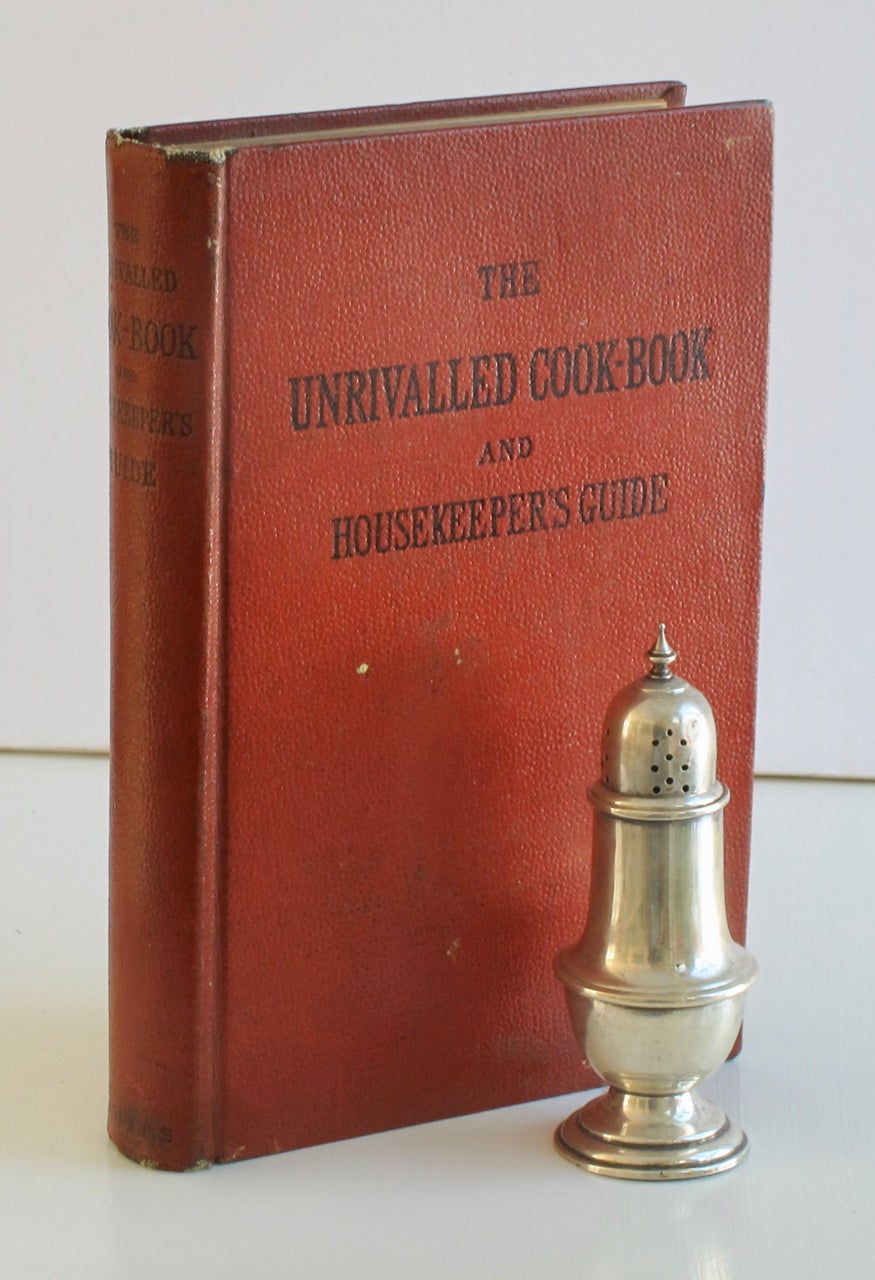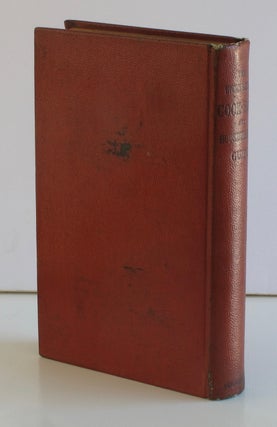The Unrivalled Cook-Book and Housekeeper's Guide. By Mrs. Washington.
New York: Harper & Brothers, Franklin Square, [copyright 1885]; 1886.
Octavo (21 x 12.5 cm.), viii, 639 pages. Table of contents. Index. Evident FIRST EDITION. Intended as a general household manual but containing one of the earliest cumulations of Creole recipes in their myriad variety – succeeding by perhaps only a few months the first two Creole summations, The Creole Cookery Book issued by the Christian Woman’s Exchange (New Orleans: The Exchange; Printed by T. H. Thomason, 1885) and La Cuisine Creole (New York: Will H. Coleman, 1885), published as an anonymous work, but belatedly (and misguidedly) attributed to Lafcadio Hearn. (Excluded from this chronology is Verstille’s Southern Cookery, first published in 1866 [New York: Owens & Agar], which includes a number of recipes associated with Louisiana; the author, Ellen Jane Lockhart Verstille [1832-1871] had been born in Alabama and spent most of her life in Georgia, but during the Civil War had accompanied her husband, a militiaman, to Avoyelles Parish, northwest of Baton Rouge.) With more than two thousand recipes, including: Broiled Mushrooms, Boiled Peanuts, Courtbouillon à la Créole, Carp à la Chambord, Lobster à la Bordelaise, Soft-shell Crabs à la Créole, Bouilli en Querelles, Stewed Beef Feet, Ragout of Kidneys, Hochepot, Blakely Mutton Páté, Blood Pudding, Boudin Blanc, Capon with Truffles, Pigeon Pie, Stuffed Egg-plants à la Créole, Collards or Cabbage Sprouts, Succotash, Corn Pie, Browned Hominy, Stewed Lettuce, Nettles and Dandelions, Buttered Parsnips, Eggs Roasted in Their Shells (in sand), Farcied Eggs, Rice Fritters, Dinah’s Cream Cake, Green Apple Pie, Sweet Potato Pie, Apple-Plum Pudding, Iced Apricot Pudding, Pistachio Custard, Gooseberry Fool, Brandied Grapes, Stuffed Mangoes à la Créole, Sherry Cobbler (with a sensible afterthought: “if you use Champaign, use less sugar”). ~ One could be forgiven for supposing that the stars over New Orleans had aligned sometime in 1885, although commercial interests lavished on the city owing to the World’s Industrial and Cotton Centennial Exposition there – from December 1884 through May 1885 – suggests a better explanatory framework for the preparation, at nearly the same time, of three seminal celebrations of Creole cuisine. Moreover, a consortium of exhibitors from the Western Hemisphere extended the fair – popularly renamed the American Exposition – from November 1885 through March 1886. The title page of The Unrivalled Cook Book displays the later date (1886), but the copy submitted to the Library of Congress for the purpose of securing copyright was accessioned on 12 October 1885. Thus it forms a trio with the aforementioned New Orleans books, and it shares with La Cuisine Creole the mysterious caché of anonymity. (Inference ascribing an authorial role to the journalist Lafcadio Hearn arose only retrospectively.) ~ But of course the stars over New Orleans were not aligned. Owing in some measure to the glare occasioned by the Exposition, but also to generational clashes that loomed with ominous inevitability, the flood of arguments over what racial constitution the word “Creole” could encompass would crest during the year 1885, when tensions within the Creole community flared into full public view (illuminating on the subject is Rien Fertel’s Imagining the Creole City: White Creole Print Culture, Community, and Identity Formation in Nineteenth-Century New Orleans [doctoral thesis, Tulane University, 2013], chapter 4 and passim). The novelist George Cable, a native of the city whose fiction and nonfiction alike explored relations among races, became the object of so much enmity that he departed New Orleans in 1885, never to return during the last forty years of his life. ~ Outside – that is, northern – observers educated about the deep South via the likes of Cable and Hearn tended to forgo distinctions – French Creole, Creole of Color, Black Creole – whose cultural politics they did not (or did not want to) fully comprehend. A trio of guidebooks to New Orleans also emerged in 1885 – all published in the North (New York, Chicago, and Cleveland), a circumstance not without implications: for it can be taken as axiomatic that a tour of the city would have been seasoned according to the tastes of its conductor. All in all, with northern investment at stake, the time was right to profit from the sale of recipe collections that promised understanding of so central a reason for visiting New Orleans as its food. But an author might verge on either the intrepid or the intemperate to wade into waters as fraught as those stirred by the word “Creole.” Best, perhaps, to remain anonymous. ~ Some age-toning to the text block; internally near fine otherwise. In publisher’s burgundy oilcloth, slightly edge-worn and abraded, with adhesions from an old paper wrapper. Rare in the marketplace. [OCLC locates twenty-four copies; Brown 2458; not in Bitting, Cagle, Uhler, or New Orleans Culinary History Group].
Price: $3,000.00


